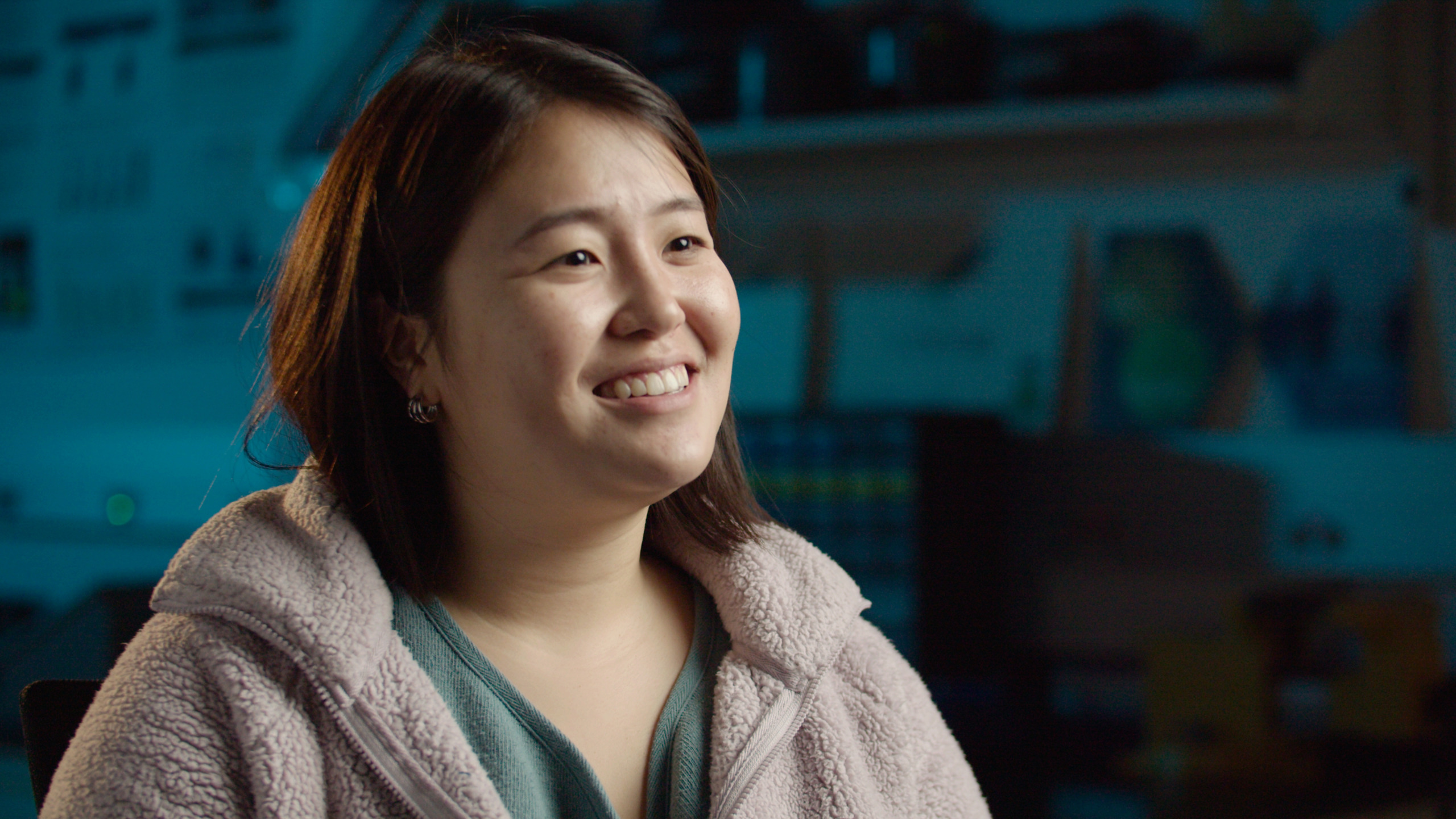“As the daughter of immigrants, I was taught since birth the importance of education and more specifically, STEM,’’ said Katherine Jin, who has been the face of the United Nations International Day of Women and Girls in Science in 2017. She serves as a role model for girls and women who are eager to tap into a STEM career but are discouraged to do so. She has also been named to the Forbes 30 Under 30 list.
Katherine is the co-Founder and Chief Technology Officer at Kinnos – a company that brought the product “Highlight” on the market, an additive combined with existing bleach disinfectant products that improves decontamination and ensures the safety of healthcare workers. A product developed very timely in times of global epidemics and pandemics.

The numbers speak for themselves. Since 2021, the World Economic Forum recorded an increase in gender gaps in operational sectors, particularly in STEM skills. Only 26% of women are involved in STEM-related fields, the discrepancy being particularly high in computer science (19%) and engineering (21%).
We talked to Katherine and asked about her professional journey, skills, and how we can increase women’s participation in STEM.
When did you realize your passion for science? What was the response of your surrounding environment?
Katherine Jin: From a young age, I’ve liked solving problems with my hands and enjoyed thinking of little solutions I could implement myself. While my parents pushed me to do well in STEM, they also emphasized that my reading and writing abilities were what made me stand out, especially compared to all the boys who scored higher than me in math and science classes.
Did you feel encouraged and supported enough in your interest in high school?
Katherine Jin: Like many women, I’ve always struggled massively with self-confidence around my STEM abilities. In middle school when I joined the MATHCOUNTS team, I remember a fellow teammate telling me I was only on the team because they needed at least one girl. In high school, when I wanted to take a computer science elective, my guidance counselor advised me that such a class was better suited for boys and that I should instead take journalism (which I did).
My parents were worried when I took AP Physics C during my senior year because they thought I wouldn’t be able to keep up with the boys, who they saw as having more innate physics ability than me. Therefore, it’s clear to see that my low self-confidence came from societal messaging (peers, teachers, and even parents) around women not being as good as men at STEM.
Simultaneously, I had no clear role models in the STEM space to point to – sure there were many successful female scientists, engineers, and inventors, but their stories were never amplified by the media enough to expose me to that kind of inspiration.
What was the turning point for you to realize that STEM is a passion that you would like to pursue as a career?
Katherine Jin: My early work with Kinnos did a lot to boost my confidence. As we began to get traction, awards, and funding – suddenly I was being bombarded by this external validation that I was competent enough.
Meanwhile, I was learning a lot more about feminism and how the oppression of women and minorities is built into a lot of our society’s systems. I began to realize most of the doubts I had about my abilities didn’t come from me or any inner voice but came from external societal perceptions.
What skills do you regard to be vital in your career?
Katherine Jin: As a Co-Founder, I’ve had to fill many roles at Kinnos and the skills I’ve come to value the most are openness and willingness to tackle difficult problems without a clear road map. For example, when we began to set up operations and manufacturing for our physical device, we had no staff that had any manufacturing background. Therefore, the person who became responsible for liaising with the engineers, suppliers, and manufacturers was me.
Related Articles: The Formula for Gender Equality: More Women in STEM-fields | Science for All: Building a Gender-Inclusive Future in the Sciences | Becoming Better Mentors to Eliminate the Gender Gap in STEM | Science Diplomats Bring a Gender Perspective to Science Diplomacy
In the beginning, this responsibility was very intimidating. However, by this time I already had a lot of experience solving hard problems with very little prior knowledge. These combined skills included the ability to conduct extensive research, strategic thinking skills, and decision-making skills.
In your opinion, what is holding women back from approaching a STEM career?
Katherine Jin: For me, the most difficult aspect of approaching a STEM career had nothing to do with myself as an individual but had to do with the space being male-dominated and often unfriendly and unsupportive to women. For me, the greatest issue in STEM professions are pervasive gender stereotypes, male-dominated cultures, and very few if any female role models or mentors.
Growing up, I had admired women who “broke the glass ceiling”, but once I was under a glass ceiling of my own instead of feeling inspired or excited, I felt dejected, disappointed, and hopeless. Fighting and advocating for yourself every day against preconceived notions of your worth because of your gender is immensely exhausting and almost like another job on top of a job.
In your opinion, how can women’s participation in STEM be fostered? What needs to be done?
Katherine Jin: Our society can do a lot more to foster women in STEM, including the government, educators, parents, and peers.
- Girls should be encouraged from a young age to believe that intellect and ability have nothing to do with gender.
- Schools need to prioritize the recruitment of women into STEM majors by promoting gender inclusivity, educating professors and students about bias, and attracting and keeping females in faculty positions as mentors and role models.
- Companies need to prioritize gender equality and gender bias education and promote and support female leaders.
- The government needs to make gender equality in STEM fields a priority – for example, by closing the gender gap between women and men in authoring patents. This can be through legislation as well as increased funding opportunities for women.
What would you say to girls who are passionate about a STEM career but feel discouraged by their surrounding environment?
Katherine Jin: My advice for women who want to pursue a STEM career is:
- build a community of other women in STEM who can support, uplift, and laugh with you;
- allow yourself to feel the anger, sadness, or other emotions that come from gender inequality and not to minimize your own feelings or experiences;
- find mentors that can advise and relate to your struggles;
- seek out workplace environments that are inclusive, if possible;
- build self-confidence and practice advocating passionately for yourself;
- and pat yourself on the back, because you’re an inspiration to your young self and countless girls out there.
Katherine is a leading example for women who have the skills and passion to tap into the world of STEM. Especially women in low-income countries are 7% points less likely than men to enroll in tertiary programs in manufacturing, construction, or engineering.

As Katherine rightly says, unlocking the potential of educational facilities and providing the right skills for women to tap into these fields provides a great opportunity to create a gender-balanced reality.
However, such a reality can only be achieved through investments in skills and technologies and needs to be handled in parallel with inclusive and sustainable industrial and educational policies.
Public Private Development Partnerships (PPDPs) can hereby serve as a tool to mobilize the private sector and engage proactively in the identification of needs, determination of priorities and mobilizing investments.
The Learning and Knowledge Development Facility (LKDF) serves as a platform that advocates for skills development for young people, including women, in developing countries. Through its PPDP projects it equips the workforce with the skills in demand, empowering women, and contributing to the development of a sustainable, inclusive, and gender-balanced workforce.
— —
This interview is part of an editorial collaboration with the United Nations Industrial Development Organization (UNIDO). It was first published on UNIDO’s Learning and Knowledge Development Facility (LKDF) website.
Editor’s Note: The opinions expressed here by the authors are their own, not those of Impakter.com — In the Featured Photo: Katherine Jin in the laboratory. Featured Photo Credit: Maaia Mark Productions / Pathways to Invention.








